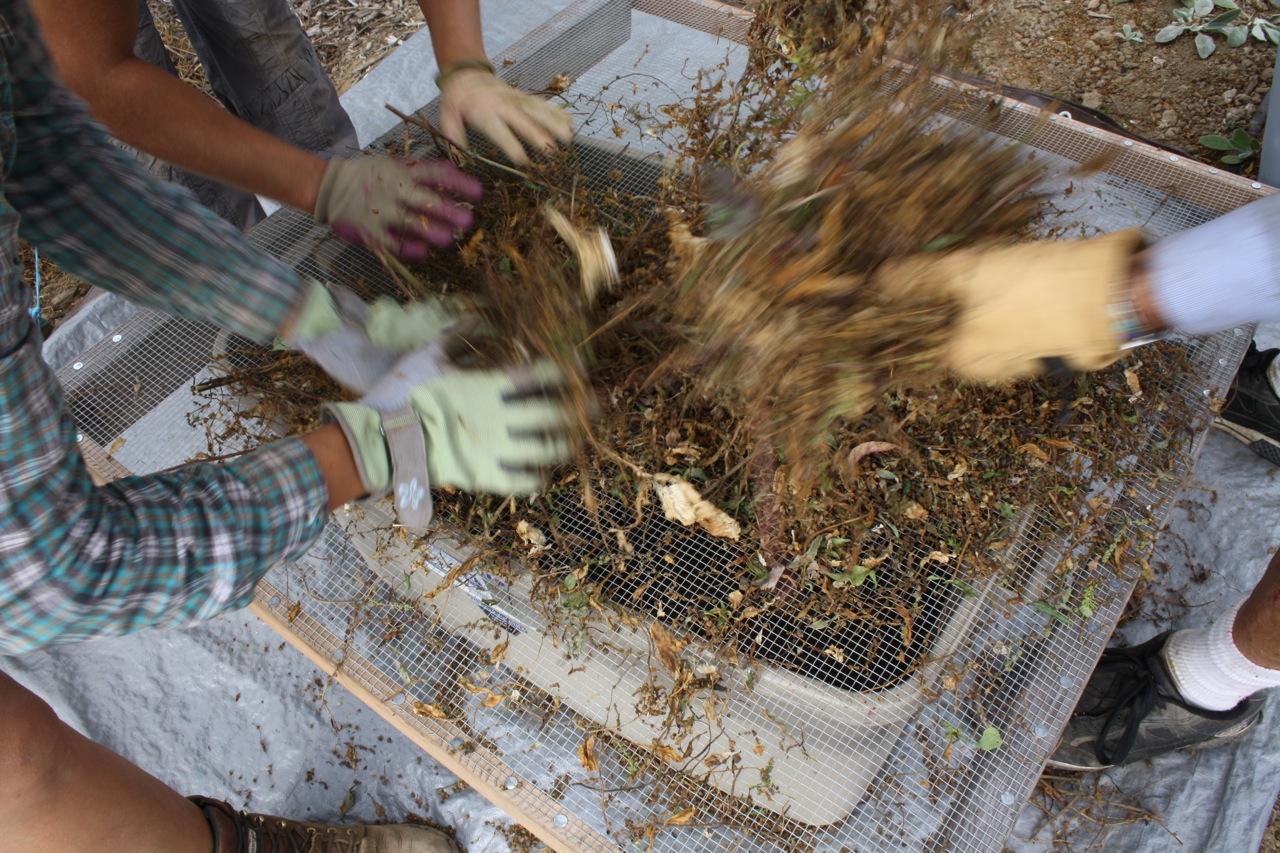Last week we harvested our first crop of ‘Forono’ beet seed with the help and tutelage of our self-described “Seed Head in residence”, Steve Peters. You may remember me mentioning Steve last year. Formerly from the seed company Seeds of Change, Steve now has his own initiative called Seed Revolution Now!. Go see his site if you want to hear more about his breeding and test plots at Fifth Crow and other local farms… This year he continued a breeding project for open-pollinated broccoli and napa cabbage here at Fifth Crow. In exchange for providing land, watering, and hosting his project, he is helping us learn about seed saving and breeding. This year’s project was to grow our own crop of ‘Forono’ beets for seed.

after being stripped from the branches, beet seed is run through a screen to remove the largest debree
Last week we harvested our first crop of ‘Forono’ beet seed with the help and tutelage of our self-described “Seed Head in residence”, Steve Peters. You may remember me mentioning Steve last year. Formerly from the seed company Seeds of Change, Steve now has his own initiative called Seed Revolution Now!. Go see his site if you want to hear more about his breeding and test plots at Fifth Crow and other local farms… This year he continued a breeding project for open-pollinated broccoli and napa cabbage here at Fifth Crow. In exchange for providing land, watering, and hosting his project, he is helping us learn about seed saving and breeding. This year’s project was to grow our own crop of ‘Forono’ beets for seed.
‘Forono’ is an old Italian heirloom that we have become quite fond of. They are cylindrical in shape, superior in flavor to any other beet we grow, and seem to be way more disease and insect resistant than the other varieties we plant. But… a couple years ago the seed disappeared from the market and we couldn’t get it anywhere. We grew a replacement variety and were totally disappointed. It was two years before we found the seed again and now we’re determined not to be at the whim of the seed companies. As the seed industry has become more and more consolidated, we as farmers’ become more and more dependent and at the whim of what the companies decide to produce and market. Specific varieties that do particularly well for us, might disappear if they aren’t lucrative for larger scale agriculture.
Overall, we think our first attempt at seed saving was successful, though we weren’t quite prepared for how huge the plants would become. I made a call to put them between our newly planted rhubarb this spring. The beets did great. The rhubarb did not survive the beets.


Here Emily, Steve, and Sun finish stripping seed from the plants. To the right, they do a second screening.
Beets are a biennial. The first year they produce a root. Then, after a winter of dormancy, they flower and produce seed in their second year. Carrots are also biennials. These beets were first sown last August or so, harvested in October, stored all winter in cold storage.. and then finally planted this spring.
In total Emily, Steve, Connor, and Sun harvested some 40-50 lbs of seed and we still have more to go. That’s a lot of beet seed!

Here’s Banks with one of the beet roots itself. Pretty gnarly looking, huh?


